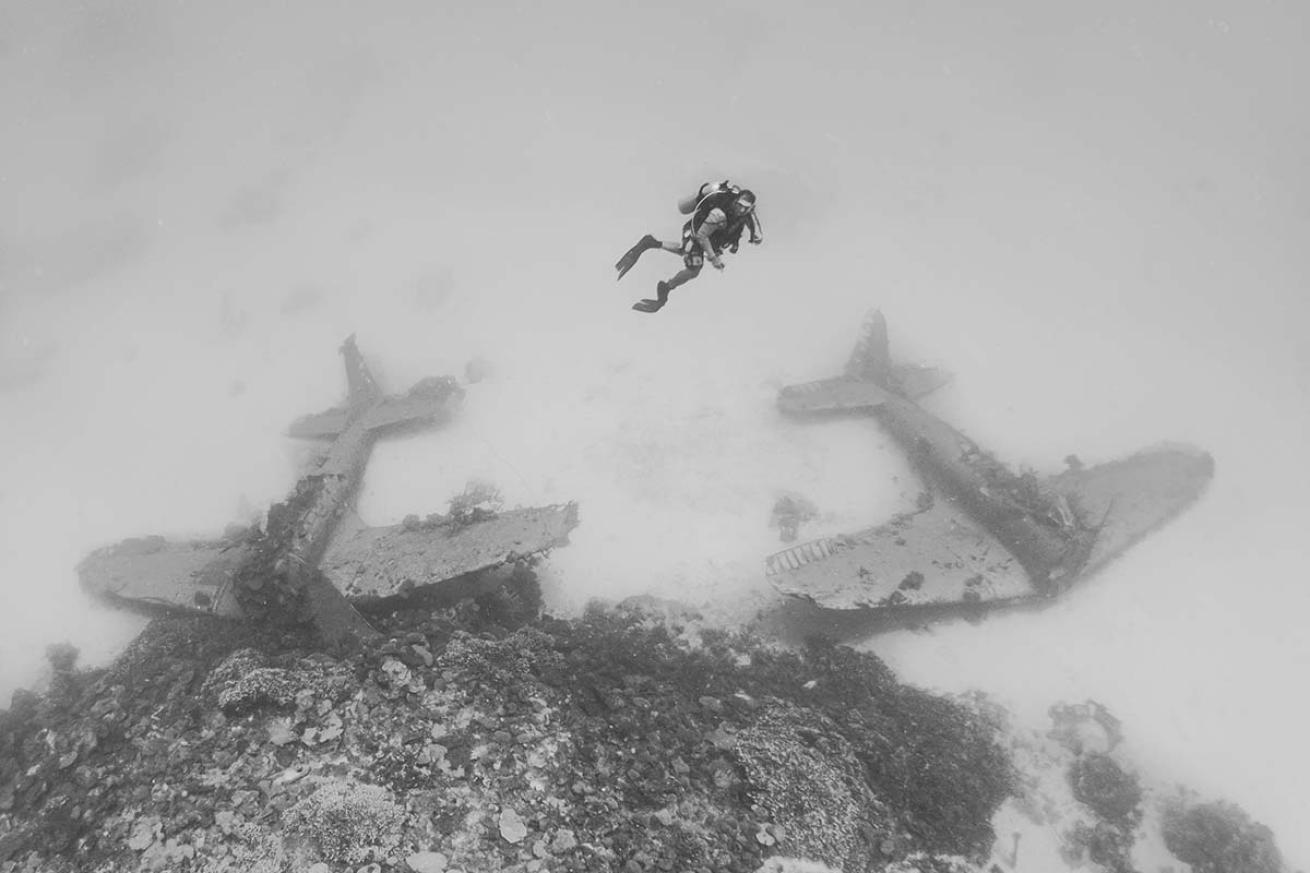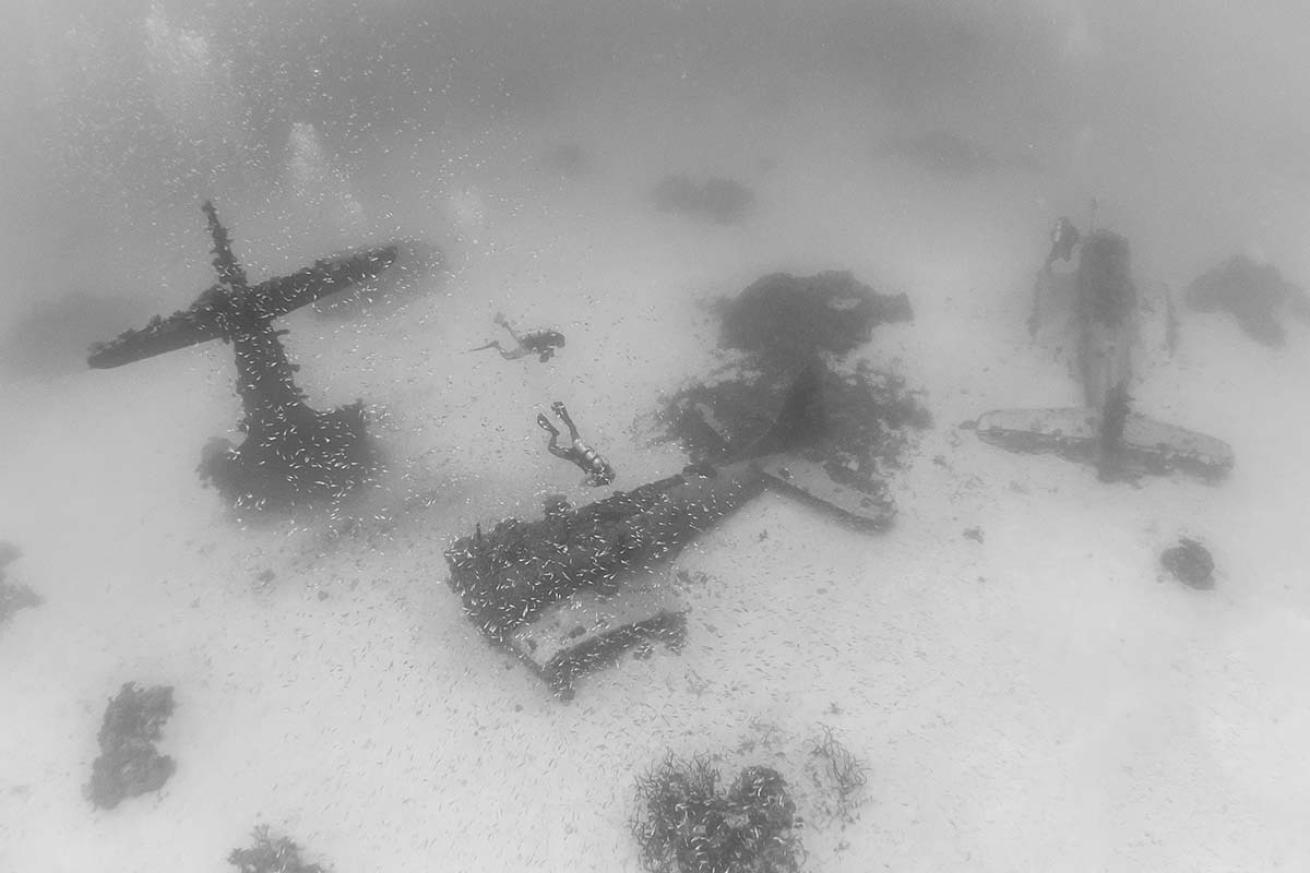What It’s Like to Dive a WWII Airplane Graveyard

Brandi MuellerA diver hovers above the Douglas SBD Dauntless planes abandoned after WWII.
Leaving the surface and the vibrant greens of the tropics, we descend into the depths. There is nothing but blue. Making our way deeper with no reference point, I notice a shadow forming below me. Getting closer, my mind does a double take as the dark shape morphs into the outline of an airplane. Airplanes don’t belong underwater . Shipwrecks seem to make sense, but airplanes?
Sitting perfectly upright in the white sand is a World War II airplane with a wingspan of 67ft. As my dive buddy rounded the nose of the airplane, she looked small in comparison to this Patrol Bomber (PBJ-1) the Navy designation of the B-25 Mitchells. There are only a few coral heads scattered around. Looking past this massive American airplane are several smaller planes. Many Douglas SBD Dauntless — used as dive bombers and scout planes—were scattered around the area. We seem to come across them no matter what direction we swim.
Several look in such good enough shape I feel they will take off at any minute and return to the skies. Others look as if they were tossed there, upside down or nose down, still others with wings and propellors detached, scattered about.
While many war plane and pilots have met their demise at the bottom of the ocean, none of these airplanes crashed; no lives were lost here. These planes were disposed of at the end of WWII — around 150 perfectly good American warbirds were loaded onto barges and pushed into the lagoon of Kwajalein Atoll in the Marshall Islands. The Marshall Islands had been occupied by the Japanese before being captured and liberated by the Allies during the 1943 to 1944 Operation Flintlock. In 1945, with the war over and the airplane technology already mostly outdated, the planes were no longer needed. Space on ships returning to the United States was limited and priority given to soldiers returning home, not airplanes.

Brandi MuellerWith transportation space at a premium after the war, the U.S. abandoned the planes over bringing home outdated technology.
In a time where the environmental impacts of dumping things in the ocean were less understood and unconsidered, the disposal of these planes was not an isolated incident. Around the Pacific there are many dump sites of things no longer needed after WWII, the most well known in Vanuatu, called Million Dollar Point. There, construction equipment valued at millions of dollars were dumped right off the beach after the war including cranes, bulldozers, trucks and building materials.
We know better now, but the Airplane Graveyard that was left behind in the lagoon of Kwajalein Atoll has essentially become an underwater museum of American WWII aircraft including Douglas SBD Dauntless, PBJ-1 Bombers, Wildcats, Avengers, a Corsair, Helldiver and a C-46. Swimming over these rarely visited planes, I think about how it’s likely these planes successfully fought in WWII and brought their pilots back to land. Coral decorates the aluminum and colorful reef fish swim within the cockpits and around fuselages revealing a much more peaceful scene than the battles that took place over 75 years ago.










